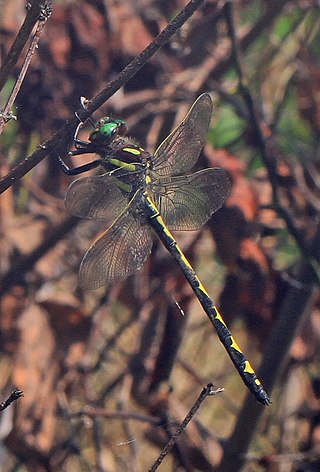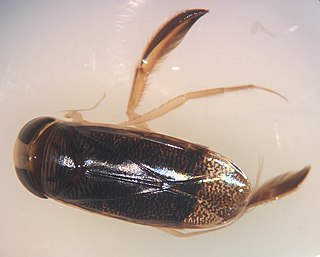
Eucalyptus obliqua, commonly known as messmate stringybark or messmate, but also known as brown top, brown top stringbark, stringybark or Tasmanian oak, is a species of tree that is endemic to south-eastern Australia. It has rough, stringy or fibrous bark on the trunk and larger branches, smooth greyish bark on the thinnest branches, lance-shaped to curved adult leaves, flower buds in groups of seven to fifteen or more, white flowers and cup-shaped or barrel-shaped fruit.

Ficus obliqua, commonly known as the small-leaved fig, is a tree in the family Moraceae, native to eastern Australia, New Guinea, eastern Indonesia to Sulawesi and islands in the southwestern Pacific Ocean. Previously known for many years as Ficus eugenioides, it is a banyan of the genus Ficus, which contains around 750 species worldwide in warm climates, including the edible fig. Beginning life as a seedling, which grows on other plants (epiphyte) or on rocks (lithophyte), F. obliqua can grow to 60 m (200 ft) high and nearly as wide with a pale grey buttressed trunk, and glossy green leaves.

Corixinae is a subfamily of aquatic bugs in the family Corixidae. There are at least 130 described species in Corixinae.
Nebria obliqua is a species of ground beetle in the family Carabidae. It is found in North America.

Psectra is a genus of brown lacewings in the family Hemerobiidae. There are more than 20 described species in Psectra.

Meronera is a genus of rove beetles in the family Staphylinidae. There are at least four described species in Meronera.

Amolita obliqua, the oblique grass moth, is an owlet moth in the family Erebidae. The species was first described by Smith in 1903. It is found in North America.
Xenopterella is a genus of flies in the family Lauxaniidae. There are at least two described species in Xenopterella.

Nemoria obliqua is a species of emerald moth in the family Geometridae. It is found in Central America and North America.

Cordulegaster obliqua, the arrowhead spiketail, is a species of spiketail in the dragonfly family Cordulegastridae. It is found in North America, often in clearings near small rivers and streams. The larvae can be found surviving in streams designated as intermittent, and may live up to 5 years before emerging as an adult in early summer.
Hesperocorixa laevigata is a species of water boatman in the family Corixidae. It is found in Central America and North America.

Hesperocorixa is a genus of water boatmen in the family Corixidae. There are more than 20 described species in Hesperocorixa.

Hesperocorixa interrupta is a species of water boatman in the family Corixidae. It is found in North America.
Dictyssa obliqua is a species of tropiduchid planthopper in the family Tropiduchidae. It is found in Central America and North America.
Dictyssa is a genus of tropiduchid planthoppers in the family Tropiduchidae. There are about 17 described species in Dictyssa.
Corythucha obliqua is a species of lace bug in the family Tingidae. It is found in North America.
Hesperocorixa lobata is a species of water boatman in the family Corixidae. It is found in North America.
Hesperocorixa atopodonta is a species of water boatman in the family Corixidae. It is found in North America.

Svastra obliqua, the sunflower bee, is a species of long-horned bee in the family Apidae. It is found in Central America and North America.










